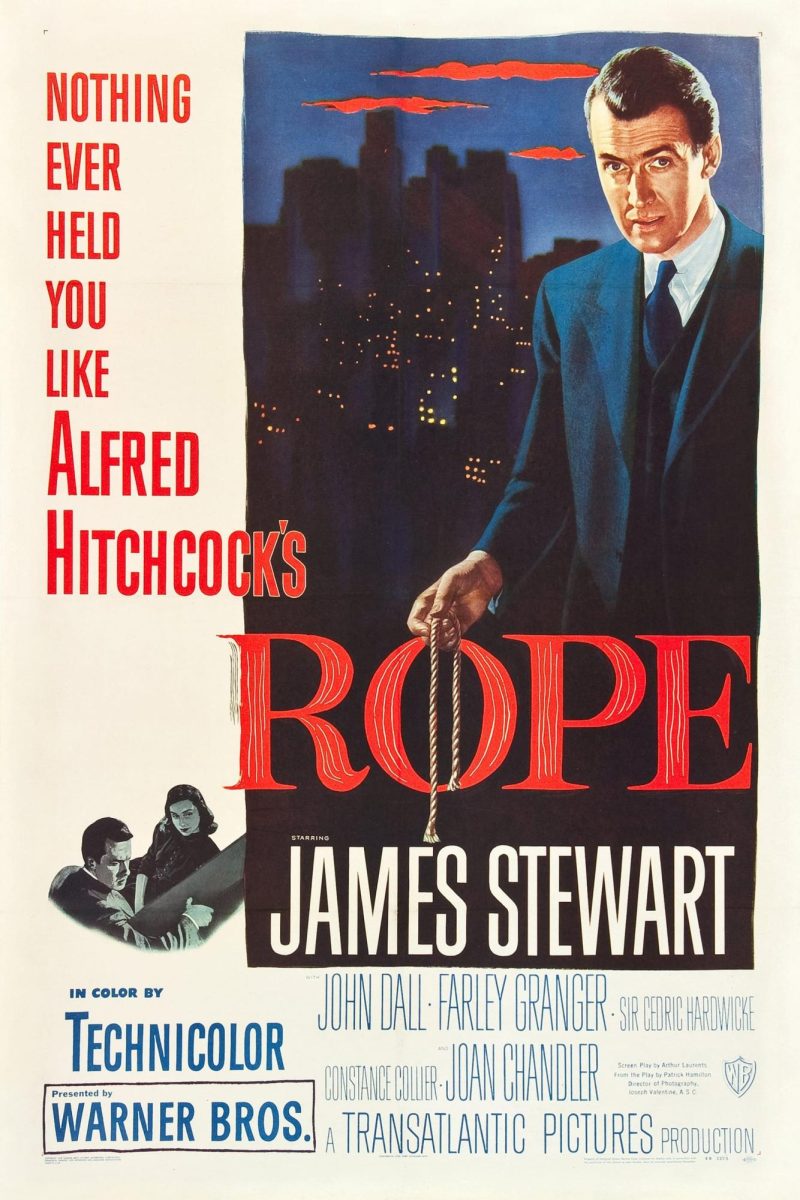Alfred Hitchcock “Rope “(1948), Hitchcock, was released when discussions of homosexuality were largely taboo in mainstream cinema. It is important to mention the Hays Code that was instated in the 1930s and bled into the time that this film was made. This code made it impossible to have openly queer interactions within film for almost 30 years and is the main reason Hitchcock was forced to hide queer themes within his own work. Hitchcock’s film dared to venture into uncharted territory during these troubling times and sneakily hinted towards the LGBTQ+ characters within the film.
At its core, “Rope” revolves around two male characters, Brandon Shaw and Phillip Morgan, who murder a former classmate, David Kentley, solely to commit the perfect crime and feel the rush that comes along with it. The relationship between Brandon and Phillip is complex, as they have a deep emotional bond and a shared sense of purpose. While the film never explicitly labels their relationship as romantic or sexual, there are subtle hints and undertones that suggest a deeper connection between the two characters. This is expected because of the laws and rules that were set in place during that period.
Some of the major hints to the queer themes within the film are included in the opening of the film as well as the conversations Brandon and Phillip had throughout. During the period, queerness was seen as a “kink” and thus Hitchcock often had the characters play with kinky themes such as the sensual way Brandon talked about the murder during the party and the panting that he and Phillip did during the scene. It was almost as if the characters had a fetish for their murder. Another telltale sign was Rupert Cadell, a former teacher and mentor to Brandon and Phillip, who came to the party and was rumored at the party to bring Brandon to “the masters feet.”
While their relationship did seem intimate in some ways, it also seemed very toxic in the sense that Brandon had more control over Phillip.
Brandon exerts a manipulative influence over Phillip, who is portrayed as more emotionally vulnerable and easily swayed by Brandon’s dominant personality. Their dynamic reflects the power dynamics often present in queer relationships, where one partner may hold more influence or control over the other. Hitchcock easily masks this dynamic by throwing in witty humor and playful banter.However, the obvious power dynamic is still very prevalent within the film.
Overall, the film was oddly sensual and obviously very closeted about the main character. However, the portrayal of the characters with queer themes kind of missed the mark. The film itself is inherently great and fascinating to watch, but the queer themes within the film just made the characters seem uncomfortable and sensual in a way.
Though within its period the film would have some great qualities about it for the queer community. The representation, whether it was an open, healthy relationship or not, was needed for queer people at this period and should be commended Hitchcock for making the film for queer people during the time.
Rating: 6/10
Movie Review: “Rope”
0
Tags:




